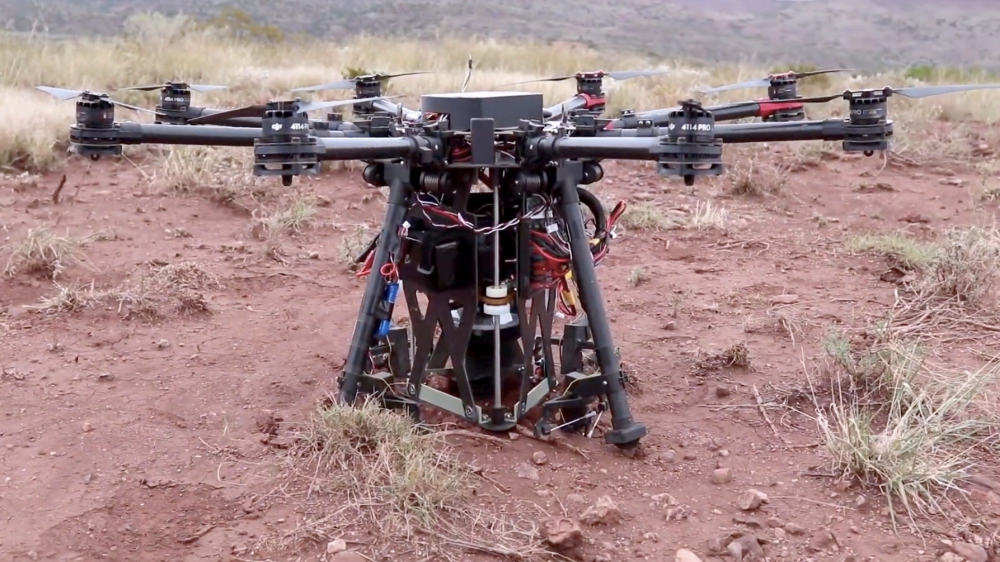The NIMBUS Lab at the University of Nebraska has been developing drones that have the unique ability to dig holes in the ground and then fill those holes with sensors. If this sounds like a complicated task, that’s because it is: The drone needs to be able to carry a portable digging system a useful distance, locate a diggable spot, land, verify that the spot it thought was diggable is in fact diggable, dig a hole and install the sensor, and then fly off again.
At IROS late last year, folks from the NIMBUS Lab presented a paper detailing a rather burly quadcopter that could carry an auger with an embedded sensor and use it to place the sensor in the ground (you can see a video of this in action here). And at ISER a few weeks later, they presented another paper on how the drone can autonomously figure out whether it’s digging in a good spot or not.
One of the biggest challenges to a system like this is that by the time you pack in the drilling rig and all the sensors and computers that the drone needs to operate autonomously, you’ll be lucky if the thing will manage to keep itself aloft for more than just a few minutes. This is not particularly useful, since the whole point is to send the drone out to place sensors in areas that you can’t easily get to yourself. What’s needed is a way of extending the drone’s range, and the NIMBUS Lab came up with one: A helicarrier, a parachute, and one of the most bizarrely effective drone deployment systems I’ve ever seen.
As you might expect, wetland monitoring isn’t the only potential application for a system like this, and the NIMBUS Lab is also working under a contract from the Department of Defense. But even beyond sensor emplacement (which seems likely to be what the DoD has its eye on), it’s easy to imagine how (relatively) small drones could team up like this for range extension and payload delivery in other interesting areas, from medical supply delivery to delivering even more drones, like CICADAs or little insect-scale ground robots.
Bits of this research have been presented at recent robotics conferences, including ISER and IROS, and you can read the papers here and here.
Source: IEEE Spectrum

